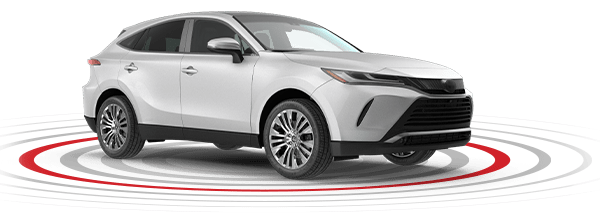CALIBRATION
ADAS

ADAS Windshield Camera Calibration
What Is
Advanced Driver Assistance Systems
(ADAS) Windshield Camera Calibration?
When your windshield is being replaced, it is essential to ensure that the camera mounted to the windshield for Advanced Driver Assistance Systems (ADAS) is calibrated correctly and restored to its original OEM settings. Failing to do so will result in the ADAS systems not functioning properly. Learn more
WHY is ADAS CALIBRATION
NECESSARY?
Distracted driving is a leading cause of accidents in the United States. If your vehicle’s ADAS (Advanced Driver-Assistance Systems) aren’t working correctly, it might not detect hazards on the road. For example, if the automatic emergency braking system misjudges a potential hazard, it could fail to stop in time. This could be a major safety issue. Proper ADAS calibration helps reduce these risks by ensuring all systems are working together as they should.
Lane Departure Warning
(LDW, LDWS)
The driver will be alerted by a sound and/or vibration if the vehicle changes lanes without using the turn signal.
ASSIST (FCA)
FORWARD COLLISION
Do you like waiting around in an auto repair shop? Sitting in a waiting room filled with old magazines, the smell of oil and air fresheners melding unpleasantly, as you wait – wait some more – and (wait for it) keep waiting. Mobile Auto Glass Shop is different.
read more
CONTROL (ACC)
ADAPTIVE CRUISE
Static calibration is intricate and needs to be conducted in a controlled environment. Our certified technicians use advanced equipment, including lasers, to calibrate the camera and other components, ensuring absolute precision in line with the vehicle manufacturer's established standards.
CALIBRATION
STATIC
Static calibration is intricate and needs to be conducted in a controlled environment. Our certified technicians use advanced equipment, including lasers, to calibrate the camera and other components, ensuring absolute precision in line with the vehicle manufacturer's established standards.
CALIBRATION
DYNAMIC
Dynamic calibration, in contrast, involves driving the vehicle on the road to adjust its sensors and cameras. This approach allows the systems to adapt to real-life conditions, collecting data and making adjustments based on actual driving experiences. It focuses on ensuring the ADAS can respond smoothly and accurately to everyday situations.
WHAT ARE THE TYPES OF ADAS SYSTEMS?
Lane Departure Warning System
(LWD, LDWS)
The driver will be alerted by a sound and/or vibration if the vehicle changes lanes without using the turn signal.
Lane Keep Assist System
(LKA, LKAS)
Helps the car stay within the designated lines if the driver hasn't signaled a lane change..
Forward Collision Assist
(FCA)
Detects the distance between the driver’s vehicle and the one ahead, alerting the driver with visual and/or audio signals if they are following too closely.
Adaptive Cruise Control
(ACC)
Automatically adjusts speed to maintain a safe distance between the driver’s vehicle and the vehicle in front.
Collision Mitigation Braking System (CMBS)
Similar to the FCA, this system activates the brakes if the driver fails to respond after being warned about being too close to the vehicle ahead.
TYPES OF WINDSHIELD CAMERA CALIBRATIONS
Static Calibration
Static calibration is intricate and needs to be conducted in a controlled environment. Our certified technicians use advanced equipment, including lasers, to calibrate the camera and other components, ensuring absolute precision in line with the vehicle manufacturer's established standards.
Dynamic Calibration
Dynamic calibration utilizes a portable electronic device that connects directly to the vehicle's OBD II port. Calibration follows the manufacturer's guidelines, which include driving at a specific steady speed, covering a designated distance, and ensuring favorable weather conditions.





